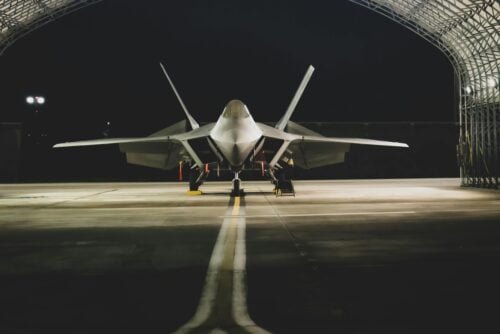In today’s ever-evolving fashion industry, keeping up with the latest trends and predicting future styles is of utmost importance. Fashion forecasting serves as an invaluable tool for designers, retailers, and consumers alike, offering insights into upcoming colors, prints, silhouettes, and fabrics. By analyzing market research, consumer behavior, and historical data, fashion forecasters are able to provide accurate predictions, enabling fashion professionals to stay ahead of the curve and make informed decisions. In this article, we will explore the significance of fashion forecasting and how it shapes the dynamics of the fashion world.

Fashion Forecasting
Fashion forecasting is a crucial component of the fashion industry, as it involves analyzing trends and predicting the future direction of fashion. By understanding consumer behavior and market trends, fashion forecasters help designers, buyers, and retailers make informed decisions about what styles and designs they should invest in. In this article, we will explore the definition of fashion forecasting, its importance in the industry, and the methods used to forecast the future of fashion.
Definition
Fashion forecasting can be defined as the process of predicting future fashion trends based on a thorough analysis of past and current trends, consumer behavior, and market research. It involves studying various factors such as social, cultural, economic, and technological influences to anticipate what styles, colors, fabrics, and silhouettes will be popular in the coming seasons.
In the fashion industry, where trends change rapidly, fashion forecasting plays a vital role in guiding designers, manufacturers, and retailers in making strategic decisions about their collections and products. It provides valuable insights into what consumers are likely to purchase, ensuring that businesses meet the demands of their target market effectively.

Importance
Influencing design decisions
Fashion forecasting directly influences design decisions, as it provides designers with valuable insights into what fashion-forward consumers are seeking. By identifying emerging trends and consumer preferences, fashion forecasters can guide designers in creating collections that resonate with their target audience. This helps designers stay ahead of the curve, attract customers, and maintain a competitive edge in the market.
Identifying emerging trends
Fashion forecasting plays a pivotal role in identifying emerging trends before they become mainstream. By analyzing cultural, social, and market changes, forecasters can spot new styles, materials, or themes that are gaining popularity. This gives designers and brands the opportunity to develop and launch innovative designs that capture the attention of trend-conscious consumers.
Minimizing risks
In an industry as dynamic as fashion, minimizing risks is crucial for businesses. Fashion forecasting helps industry professionals mitigate risks by providing them with crucial information about what consumers want and what styles are likely to sell well in the market. By investing in trends that have a higher chance of success, brands can avoid excessive inventory, decrease markdowns, and increase profitability.

Methods
Fashion forecasters employ various methods and techniques to predict upcoming trends and consumer preferences. These methods include trend analysis, consumer research, fashion shows, social media monitoring, trade shows and exhibitions, and consulting experts.
Trend analysis
Trend analysis involves analyzing past and current fashion trends to identify patterns and shifts in consumer preferences. By studying fashion history, market reports, and sales data, fashion forecasters can uncover recurring styles and predict how they may evolve in the future. This helps designers and brands develop collections that reflect the current zeitgeist while staying true to their brand identity.
Consumer research
Consumer research plays a pivotal role in fashion forecasting, as it helps forecasters understand the needs, preferences, and behaviors of target consumers. This involves studying demographic and psychographic data, monitoring consumer behavior through surveys and interviews, and analyzing purchasing patterns. By gaining insights into consumer desires and aspirations, fashion professionals can create products and campaigns that resonate with their target market effectively.
Fashion shows
Attending fashion shows is a crucial method of fashion forecasting. By observing designer collections, analyzing key looks, and identifying prevailing styles and silhouettes, forecasters can predict what trends are likely to emerge in the upcoming seasons. Fashion shows provide a platform for designers to showcase their creativity and set the tone for future trends, making them an essential source of inspiration for fashion professionals.
Social media monitoring
In today’s digital era, social media monitoring has become an integral part of fashion forecasting. By tracking fashion influencers, bloggers, and celebrities, forecasters can identify emerging styles, colors, patterns, and motifs. Moreover, analyzing engagement and feedback from followers helps forecasters understand the popularity of specific trends and gauge consumer sentiment. By monitoring popular hashtags and fashion-related conversations, fashion professionals can stay attuned to the pulse of the industry and make informed decisions.
Trade shows and exhibitions
Participating in industry events and trade shows is another vital method of fashion forecasting. By observing new collections, brands, and emerging designers, forecasters can spot innovative styles and upcoming trends. Trade shows and exhibitions provide a platform for networking with industry professionals, exchanging ideas, and gaining insights into the latest developments in the fashion industry. This helps forecasters stay well-informed and anticipate future trends more accurately.
Consulting experts
Collaborating with fashion insiders and seeking advice from industry professionals is an invaluable method of fashion forecasting. Fashion insiders, such as stylists, editors, and trend forecasters, possess extensive knowledge and experience in the industry. By tapping into their expertise, forecasters can gain unique insights and perspectives, enhancing the accuracy of their predictions. Additionally, employing trend forecasting agencies that specialize in tracking fashion trends and consumer behavior can provide businesses with comprehensive and reliable forecasts.
In conclusion, fashion forecasting is a vital process in the fashion industry, enabling designers, retailers, and brands to make informed decisions about their collections and products. By analyzing trends, studying consumer behavior, and utilizing various methods, fashion forecasters shape the future of fashion by anticipating what styles and themes will resonate with consumers. With the help of forecasting, the fashion industry can navigate the ever-changing landscape and meet the demands of its target market effectively.
